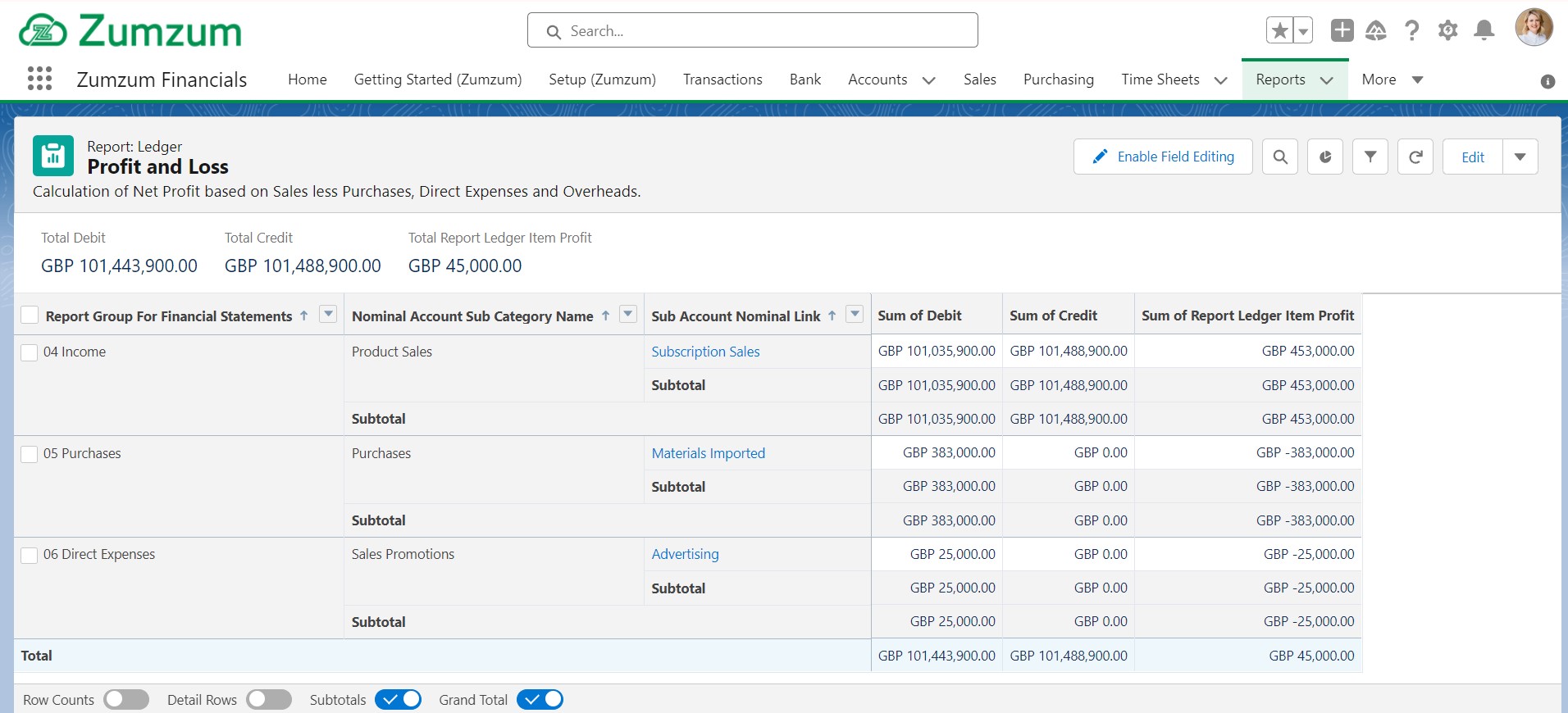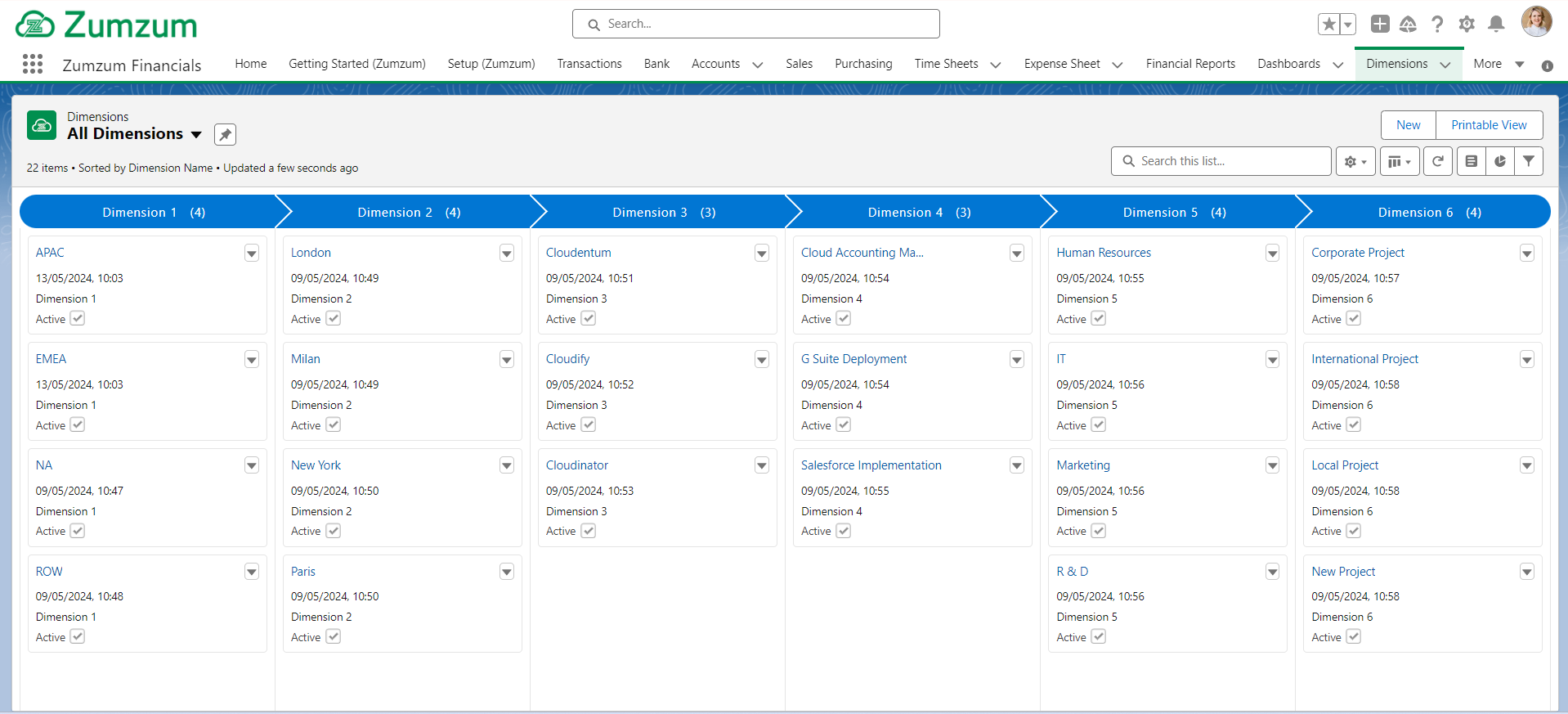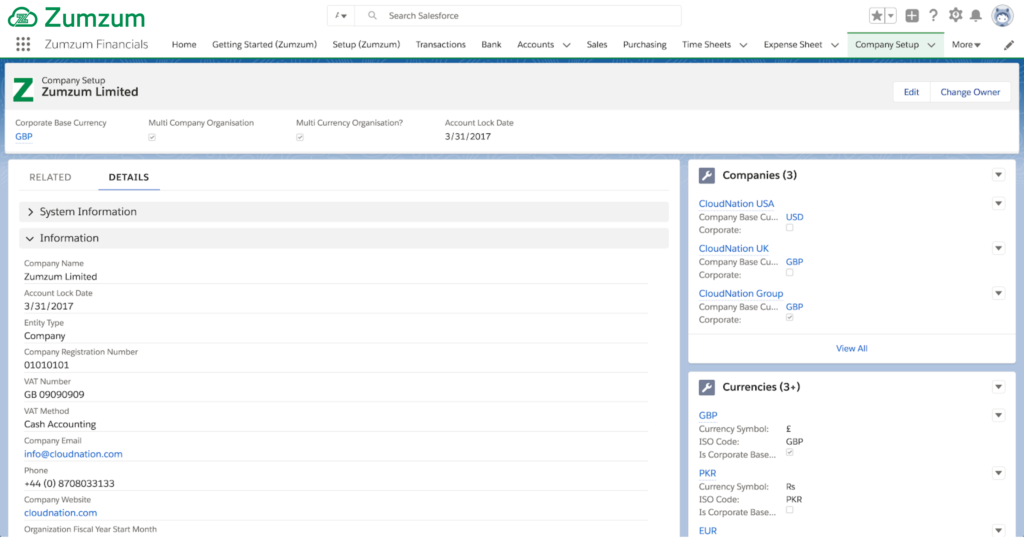3 Ways To Simplify General Ledger Processes in Salesforce
For success in the business world, keeping accurate financial transactions and records is essential. Whether running a start-up or a large organisation, businesses must keep detailed ledgers for financial transactions to be carried out correctly and legally. In this aspect, a General Ledger is a basic structure for financial reports and records. General Ledger tracks important information and accounts regarding various transactions such as the company’s assets, liabilities, equity capital, income and expenses, and also ensures compliance with accounting standards and legislation. General Ledger often helps the decision-making processes of finance teams and business leaders by providing valuable information for financial data analysis.
Accounting for Salesforce gives businesses more control and insight into their financial operations. The benefit of leveraging General Ledger in Salesforce lies in the ability to centralise financial data in a platform already widely used for customer relationship management. By managing General Ledger operations in Salesforce, companies can improve data accuracy, and increase overall efficiency. Additionally using General Ledger in Salesforce promotes better collaboration and ensures compliance with accounting standards and regulations.
What is The Reason Companies Use General Ledger Accounts?
In General Ledger, business data is divided into sub-ledgers; assets, income, expenses, liabilities and equity capital. After completing each sub-ledger accounting cycle, companies create a trial balance. The information obtained from this trial balance provides the basis for making the financial statements of companies. The main factors of the use of General Ledger accounts by companies are;
- Financial Tracking: General Ledger accounts provide a systematic method for tracking all financial transactions within a company. These records can help finance teams detect unusual transactions.
- Financial Reporting: A General Ledger provides a record of financial transactions that is necessary to prepare financial reports and statements such as balance sheets, income and cash flow statements for various internal stakeholders.
- Trial Balance: Trial balance is a report that lists every General Ledger account and provides a view of the company’s financial statement at a particular point in time to ensure the entries in a company`s bookkeeping system are correct. The trial balance helps to evaluate the accuracy of financial records and detect any errors.
The 5 Categories of General Ledger
General ledger accounts are divided into five categories: assets, liabilities, equity, income and expenses. These five categories form the basis of any accounting system.
- Assets: An asset is anything that has a financial value to a business such as what the company owns and uses including cash, accounts receivable, inventory, equipment and property. According to International Financial Reporting Standards (IFRS), an asset is “a resource controlled by the enterprise as a result of past events and from which future economic benefits are expected to flow to the enterprise.” Understanding assets and valuing them correctly is important to accurate accounting.
- Liabilities: Liability accounts are the debts of a business. The opposite of assets, liabilities are what a company owes. These are the rights of creditors or third parties over the business’s assets such as trade payables, loans, accrued expenses and deferred revenues.
- Equity: Equity refers to the company’s book value which is the difference between liabilities and assets on the balance sheet. It is the amount of money a company owner has. On a company’s balance sheet, the difference between its liabilities and assets shows how much equity the company has.
- Expense Ledger: Expenses refer to the costs incurred in carrying out the business. Examples include purchases for materials, lease payments, and expenses related to employee costs. The regular expense account balance is a debit.
- Revenue Ledger: Income is the increase in benefits during the accounting period. It reflects the amount obtained from the sale of goods and services such as sales revenue, service revenue, and interest income.
How a General Ledger Works on Salesforce?
The General Ledger in Salesforce organises the financial data and captures, classifies, and tracks every transaction, providing a comprehensive view of the company’s financial health. It provides a holistic approach to financial management by providing users with real-time information and streamlined processes. This information can help management make financial and data-driven decisions.
While General Ledger accounts are available in Salesforce Billing Editions, it could be more beneficial to integrate Salesforce with a comprehensive finance system. Although Salesforce is a great CRM platform, it may not provide holistic financial management on its own. If you want to manage your company’s specific financial needs seamlessly on the Salesforce platform, you generally achieve this by integrating finances into accounting software that is built natively in the Salesforce platform. In this way, you will access more financial features, including General Ledger, and facilitate all financial processes on the Salesforce platform. Check out AppExchange for great finance processes in Salesforce.
If you want to learn more about Salesforce Billing, check out the articles on Salesforce Help.
How To Simplify General Ledger Processes in Salesforce
-
Customise general ledger with clicks-not-code
Quickly adapt to changing business needs without the need for expensive coding. Use Subcategories to create the structure of your financial reports. Subcategories provide a dynamic solution to effortlessly adapt your financial reports to changing business needs. By structuring your Ledger with Subcategories, you can quickly adapt to changing needs without the need for costly custom coding. This approach allows you to quickly customise your ledger, simplify reporting processes, and obtain real-time insights directly in the Salesforce platform. Quickly customise your ledger, simplify your reporting, and gain real-time insights that are 100% native to the Salesforce platform.
-
Simplify your chart of accounts with Dimensions
Capture the business context of your transactions with user-defined dimensions. Easily track performance by profit centre, project, fund and more. With user-defined dimensions, you can capture the complex business context surrounding your transactions and gain deeper insights into your financial data. Tracking performance by any specific dimension you want gives you a comprehensive understanding of your company’s financial environment.
-
Easily manage Multi-Company and Multi-Currency transactions
Manage the financials for multiple companies, each with its base currency. You can automate currency conversions and get real-time reports at the click of a button. By automating currency conversions, you eliminate manual errors and ensure accuracy in your multi-company environment. With real-time reporting features, you can instantly access critical insights, make informed decisions and support your business growth.
Conclusion
Leveraging General Ledger capabilities in Salesforce offers unique opportunities to streamline and simplify financial management processes. From customising subcategories to capturing transaction data and using user-defined dimensions for comprehensive reporting, businesses can adapt their General Ledger to meet evolving needs without the need for coding. Additionally, managing multiple companies with different base currencies becomes effortless thanks to automatic currency conversion and real-time reporting features. By adopting these functions, organisations can improve efficiency, accuracy, and decision-making, ultimately increasing the success of their financial operations.




